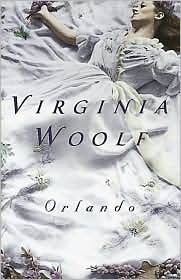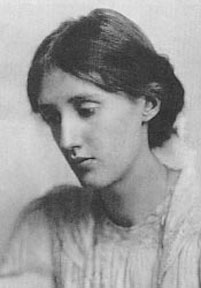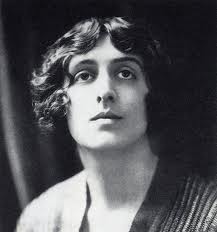“The very fabric of life was magic.”
In her most playf ul and exuberant novel, Virginia Woolf writes the “historical biography” of Orlando, a young boy of nobility during the reign of Queen Elizabeth I. A wild ride through four centuries, the novel shows Orlando aging, magically, only thirty-six years between 1588 and 1928. Even more magically, he also changes from a man to a woman. As she explores Orlando’s life, Woolf also explores the differing roles of men and women in society during various periods, ultimately concluding that one’s role as a man or woman is determined by society, rather than by birth.
ul and exuberant novel, Virginia Woolf writes the “historical biography” of Orlando, a young boy of nobility during the reign of Queen Elizabeth I. A wild ride through four centuries, the novel shows Orlando aging, magically, only thirty-six years between 1588 and 1928. Even more magically, he also changes from a man to a woman. As she explores Orlando’s life, Woolf also explores the differing roles of men and women in society during various periods, ultimately concluding that one’s role as a man or woman is determined by society, rather than by birth.
From the Elizabethan period, during which Orlando works as a steward for the queen and also serves as her lover, he progresses to the reign of James I, experiencing a profound love for a Russian princess, Sasha, who is herself exploring the role of a man. When the relationship ends, he retreats, devastated, to his estate, with its 365 rooms and 52 staircases, which he redecorates over the ne xt few years. An interlude in which he is wooed by the Archduchess Harriet/Archduke Harry leads to his ambassadorship to Constantinople, a period spent with the gypsies, and his eventual return to England–as a woman. New experiences and observations await her there.
xt few years. An interlude in which he is wooed by the Archduchess Harriet/Archduke Harry leads to his ambassadorship to Constantinople, a period spent with the gypsies, and his eventual return to England–as a woman. New experiences and observations await her there.
Throughout the novel, Woolf matches her prose style to the literary style of the period in which Orlando lives, creating always-changing moods and sheer delight for the reader. Some constants continue throughout the four centuries of Orlando’s life. Orlando is always a writer, always recording his thoughts, and always adding to a poem he has begun as a child entitled “The Oak Tree.” He is always returning to his 365-room house whenever he needs to recuperate from his experiences, and some characters repeat through time. (Orlando is betrayed by Nick Greene during the reign of James I, but he is encouraged by Nicholas Greene in the Victorian period.)
Literary hi storians make much of the fact that Woolf modeled Orlando on Vita Sackville-West, Woolf’s lover, and that this study of gender roles was an early exploration of lesbianism, bisexuality, cross-dressing, and transgender identities. The novel is pure fun to read, however, and though it raises serious and thoughtful questions about sexuality and the ways that it controls our lives, there is no sense that Woolf wrote the novel specifically to make a public statement or prove a point. Her themes of gender and its relation to social expectations, of imagination and its relation to reality, of the importance of history in our lives, and of the unlimited potential of all humans, regardless of their sex, transcend the specific circumstances under which Woolf may have written the book. A playful and delightful novel, which broke new ground with its publication.
storians make much of the fact that Woolf modeled Orlando on Vita Sackville-West, Woolf’s lover, and that this study of gender roles was an early exploration of lesbianism, bisexuality, cross-dressing, and transgender identities. The novel is pure fun to read, however, and though it raises serious and thoughtful questions about sexuality and the ways that it controls our lives, there is no sense that Woolf wrote the novel specifically to make a public statement or prove a point. Her themes of gender and its relation to social expectations, of imagination and its relation to reality, of the importance of history in our lives, and of the unlimited potential of all humans, regardless of their sex, transcend the specific circumstances under which Woolf may have written the book. A playful and delightful novel, which broke new ground with its publication.
Notes: The author’s photo is from http://www.nndb.com/people/825/000031732/
The photo of Vita Sackville-West, the model for Orlando, may be found on http://users.library.fullerton.edu/scox/vitaswbib.htm
Also reviewed here: TO THE LIGHTHOUSE
